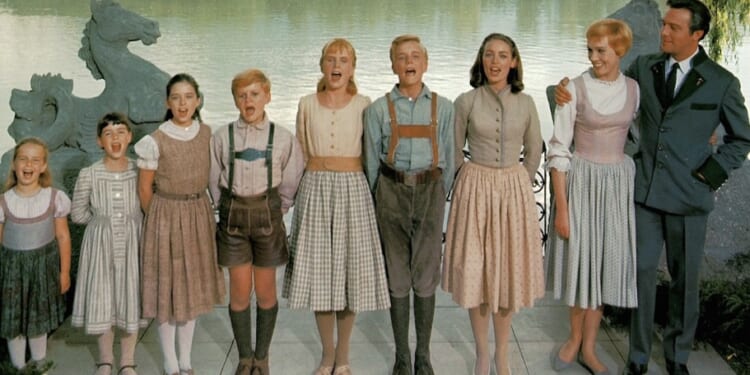There’s a lot being written these days in socially conservative circles about the ever-increasing birth dearth – falling fertility rates that are threatening the long-term sustainability of many nations, including the United States.
Studies and data reveal that here in America, the birth rate hit a record low of 1.6 children per woman in 2024. Even when women are having children, they’re often waiting longer to start a family, which then leads to fewer of them per husband and wife.
Family size is an intriguing subject. Despite the falling birth rate, Gallup recently reported that Americans consider the ideal family size to be 2.7 children. There’s the possibility that couples may want more than a child or two but wait too long to make it happen. Back in 1936 when Gallup first asked the question, husbands and wives said they thought the perfect family included 3.6 children. That preference number began to drop off in the 1970s.
Anti-natalist advocates, sometimes driven by climate concern insanity, continue to advocate for smaller families or even no children at all. Never mind that it’s social suicide and based on junk science. They continue to operate under the delusion that the earth is warming to dangerous levels and only fools would voluntarily welcome children into the steaming cauldron.
Thankfully, not everybody is either indifferent or insane. Some well-meaning politicians have taken note of the falling birth rate and proposed a number of pro-natalist policies. These have included cutting tax rates, increasing the child tax credit, and expanding parental leave.
It’s always a good thing when taxpayers keep more of their hard-earned money, but the jury is still out on the overall effectiveness of the policies in encouraging married couples to have more children.
Social scientists and demographers are now writing books and white papers on the subject, even giving lectures to important people in important places. The big problem is no longer a big secret – but the long-term solution remains evasive.
But if social policies, tax breaks, studies, lectures, and opinion pieces aren’t enough to turn things around, what will do the job?
As Christians, we know that God has called His people “to be fruitful and multiply” (Gen. 1:28). We’re to marry and have children. The Lord doesn’t dictate how many children a married couple should have but we know He’s provided husbands and wives with the capacity to have many of them.
According to the Guinness World Record, Valentina Vassilyev of Russia gave birth to 69 children between 1725 and 1765. She had 16 sets of twins, 7 sets of triplets and 4 sets of quadruplets. In the United States, Moddie Oliver of Lumberton, North Carolina, gave birth to 32 children, the last one in 1959.
Christians should be leading the way when it comes to the fertility rate. Instead, Muslims are out front at around 3.1 children per woman. Mormons are at 2.7. Christians? 2.7.
In an increasingly secular world, though, if social policies, tax breaks, studies, lectures, and opinion pieces aren’t enough to move the needle, what will?
How about art?
It was the German playwright Bertolt Brecht who observed, “Art is not a mirror held up to reality but a hammer with which to shape it.” Whether via the movies, television, theater, music or painting and photography, art can move and motivate in profound and significant ways.
During the depths of the Great Depression, child actress Shirley Temple was said to give Americans hope for the future. In her innocence and charm, couples were given a visual of what life could hopefully one day be again.
The Sound of Music is a classic and beloved film punctuated and remembered because of its Rodgers and Hammerstein tunes – but also because of the von Trapp brood. Lovely, lively and laughing, the singing siblings helped audiences see how happy a family can be – even amid toil and trouble.
For some, the Brady Bunch helped make sense of a changing culture. Blended family life can have its challenges, but Marcia, Jan, Cindy, Greg, Peter and Bobby all managed to make it work – and have fun doing so.
The movie Cheaper By the Dozen began as a memoir written by Frank Bunker Gilbreth, Jr. and Ernestine Gilbreth Carey about their family life. The first version of the movie debuted in 1950. Today’s audiences remember the Steve Martin version from 2003. The large family was zany, difficult – but loving.
We desperately need Hollywood and artists to help cast a vision of the beauty, charm and fun of married life, children and large families. We don’t need dark films – we need bright ones with light and love and laughter.
We need a rising generation to catch a glimpse of the ideal. Artists sow seeds and as Christians, we can water and nurture the image by having large and functional families ourselves. Don’t lecture about big families – live by example. Have children. Lots of them. In fact, as many as He will bless you with, welcome and raise them in the fear and admonition of the Lord (Eph. 6:4).
Photo from YouTube.




![Hegseth Demands Fitness Requirements, Says 'Fat Troops' 'Not Who We Are' [WATCH]](https://teamredvictory.com/wp-content/uploads/2025/09/Hegseth-Demands-Fitness-Requirements-Says-Fat-Troops-Not-Who-We-350x250.jpg)






